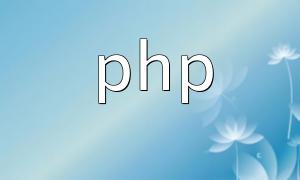With the development of globalization, communication across languages has become increasingly important. In the context of the internet, translation tools have become an essential part of the digital age. For developers, API interfaces are one of the best choices for implementing cross-language translation functions. This article will introduce how to use PHP Baidu Translation API to implement German to Chinese translation.
Before we start using Baidu Translation API, we need to do some preparation work.
First, we need to register a Baidu developer account and create a new application in the Baidu Developer Platform. During the application creation process, we need to obtain the App ID and App Key, which are important parameters for using the Baidu Translation API later.
Since we need to make HTTP requests to call the Baidu Translation API, we need to ensure that our PHP environment supports the CURL extension. If the CURL extension is not installed in your local PHP environment, you can install it using the following command:
<span class="fun">sudo apt-get install php-curl</span>
Next, we need to create a new PHP file and include the Baidu Translation API class file that we download from the official Baidu website, as shown below:
<span class="fun">require_once 'BaiduTranslate.php';</span>
After completing the preparation work, we can proceed with implementing the German to Chinese translation functionality. The following are the specific steps:
First, we need to create an instance of the BaiduTranslate class, as shown below:
<span class="fun">$translate = new BaiduTranslate($appID, $appKey);</span>
Here, $appID and $appKey are the App ID and App Key we obtained during application registration.
Next, we call the translation method to implement the German to Chinese translation. The code is as follows:
<span class="fun">$result = $translate->translate($query, 'de', 'zh');</span>
In this case, $query is the German text to be translated, 'de' indicates that the source language is German, and 'zh' indicates that the target language is Chinese.
Finally, we need to parse the translation result and output it to the page. The code is as follows:
<span class="fun">$res = json_decode($result, true);</span>
Then, by checking whether the translation result exists, we can output the translated text or a failure message:
if (isset($res['trans_result'][0]['dst'])) {
echo $res['trans_result'][0]['dst'];
} else {
echo 'Translation failed';
}Here is the full PHP code example:
<span class="fun">require_once 'BaiduTranslate.php';</span>
<span class="fun">$appID = 'Your App ID';</span>
<span class="fun">$appKey = 'Your App Key';</span>
<span class="fun">$translate = new BaiduTranslate($appID, $appKey);</span>
<span class="fun">$query = 'Guten Tag! Wie geht es Ihnen?';</span>
<span class="fun">$result = $translate->translate($query, 'de', 'zh');</span>
<span class="fun">$res = json_decode($result, true);</span>
if (isset($res['trans_result'][0]['dst'])) {
echo $res['trans_result'][0]['dst'];
} else {
echo 'Translation failed';
}By following the above steps, we can easily use the PHP Baidu Translation API to implement German to Chinese translation functionality. With this example, we can also extend and customize the translation functionality to meet specific needs. I hope this article helps beginners understand and implement translation functionality. Thank you for reading!
Related Tags:
API








